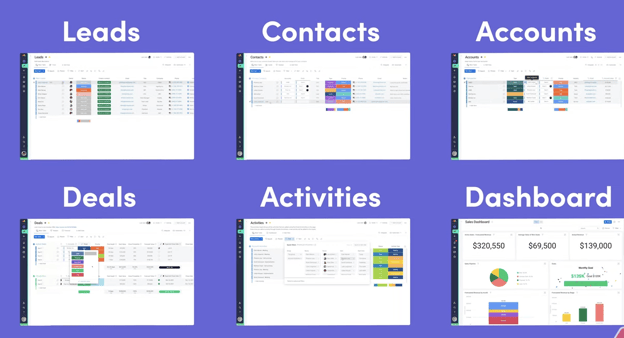.jpg?width=1024&height=450&name=Blog%20feature%20images%20(900%20x%20525%20px).jpg)
Having a smooth workflow is like having a well-oiled machine. In your monday.com workspace, seamless automations keep everything running smoothly. When your automations are working properly, you can focus on what really matters, like growing your business and achieving your goals. But what happens when those automations start acting up? Fixing broken automations is key to keeping things simple and efficient.
For busy businesses, staying productive means addressing any automation hiccups head-on. Fixing these issues not only saves time but also enhances overall performance. If you've ever faced the frustration of an automation that didn't trigger or a task that fell through the cracks, you're certainly not alone. Let's look at why automations break and how to tackle these common problems.
Common causes of broken automations
Problems with automations can come from various sources. Here are some typical culprits:
Outdated or incorrect trigger settings: Triggers are the starting point of any automation. If they're set up incorrectly or haven't been updated in a while, they can easily break. This happens often when tasks evolve but triggers don't get adjusted accordingly.
Changes in workflow structures: A change in how your business operates can disrupt automations. For instance, if you reorganise tasks or alter the flow, existing automations might not align with the new setup.
Integration issues: Many businesses use a mix of tools that need to work together. If there's a problem in how monday.com interacts with another platform, automations can fail. This could be due to updates in external tools or configuration mismatches.
Understanding these causes is the first step to fixing them, helping to prevent future downtime. Imagine automations as a train; if the track directions change without adjusting the signals, chaos can ensue. But with the right attention and tweaks, the train (or workflow) can get back on track, running without a hitch.

Steps to diagnose and fix broken automations
Tackling broken automations can seem like a puzzle, but with a clear game plan, it becomes manageable. Here’s a straightforward approach to get your automations back on track.
- Review and adjust trigger conditions: Begin by examining your triggers. These are the cues that start an automation. Check if they are up-to-date and make sense for your current setup. Maybe you’ve updated your workflow, and the old triggers no longer apply. Adjust them to match your current needs, ensuring they still align with your intended outcomes.
- Verify and update action steps: After triggers, action steps come next. Each automation should follow a logical sequence of actions. If one step fails, the whole process can break. Look through each step, verify its accuracy, and update where needed. Sometimes tiny tweaks, like changing a task’s order or altering a specific condition, can make all the difference.
- Check and resolve integration errors: Automations often rely on integrations with various platforms. If an integration breaks, the automation may not work. Double-check all connected tools for compatibility issues or updates that might have affected the setup. Reconnecting or adjusting settings across platforms can help restore functionality.
Best practices for maintaining automation health
Regular maintenance of automations ensures they serve you well with minimal hiccups. Here are some best practices to keep your automations running smoothly.
Routine audits and testing: Regularly audit your automations. This involves checking if they are functioning as intended and making minor adjustments. Performing routine tests can catch potential snags before they become significant issues.
Updating documentation: Keep thorough documentation of your automations. This not only aids in understanding their purpose but also provides valuable insights when it’s time to make updates or train new team members.
Scheduled reviews: Plan regular reviews to reassess your automation needs. Business goals and processes evolve; ensuring your automations adapt to these changes is crucial for continued efficiency.

Leveraging monday.com experts for complex issues
Sometimes, handling automation issues yourself might feel overwhelming. This is where expert guidance becomes invaluable.
Expert insights: Professionals offer solutions tailored to your unique challenges. With their deep understanding of tools like monday.com, they can diagnose and fix complex problems quickly.
Optimising workflows: Experts help optimise workflows, ensuring they are as efficient and effective as possible. Their knowledge can transform a good system into a great one, minimising errors while enhancing functionality.
Long-term success: Engaging experts ensures your operations remain seamless over time. Their input helps maintain a robust system, reducing the likelihood of future disruptions.
The upstream monday.com experts can help
Addressing broken automations in your monday.com workspace is essential to maintain a smooth and productive workflow. By following a strategic approach to diagnosing and fixing issues, your team can quickly get back to business. Regular maintenance and professional support further ensure long-term success, saving time and resources in the long run. So, keeping these practices in check will lead to a more streamlined and efficient operation.
Ready to keep your monday.com workspace running like a dream? Explore how our monday.com experts can support your team’s success. upstream is here to help you sort out any complexities, ensuring your automations remain flawless and efficient.




